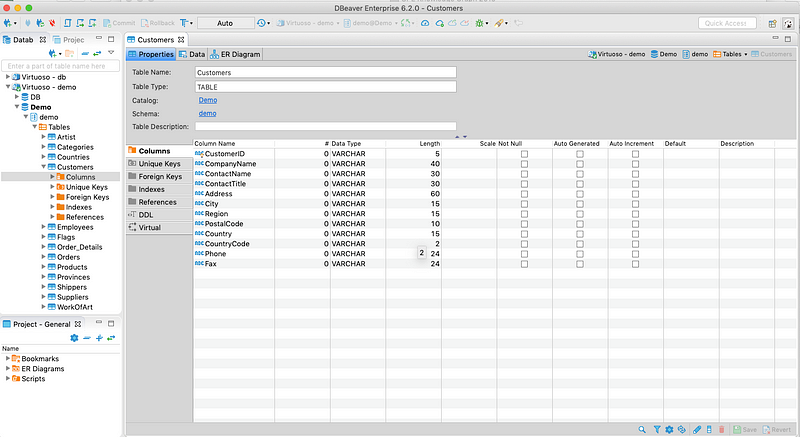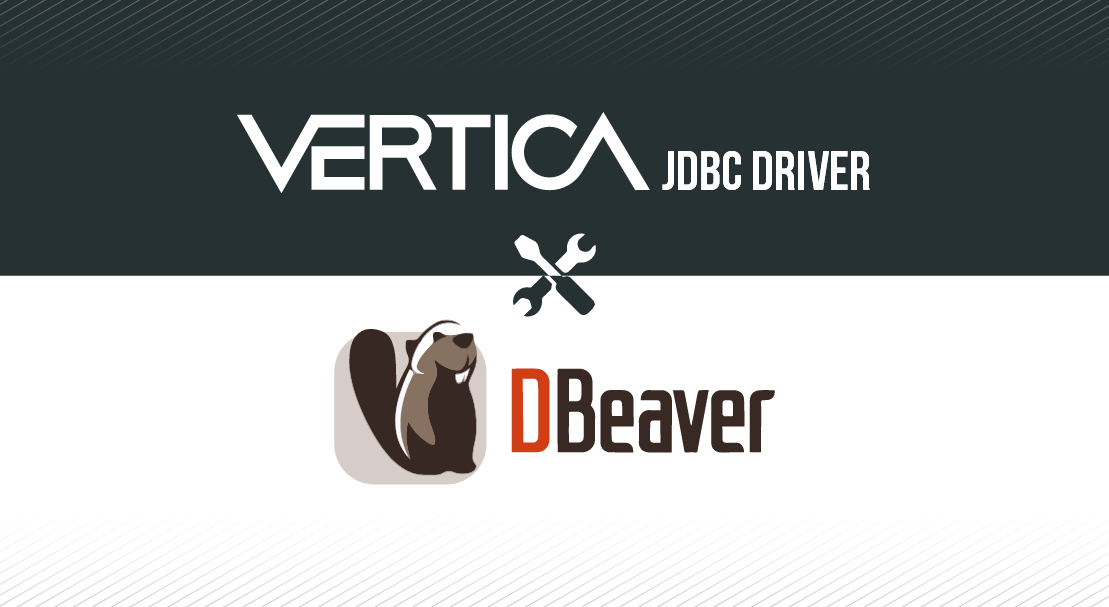- Dbeaver Jdbc Driver For Sql Server
- Dbeaver Jdbc Download
- Dbeaver Install Jdbc Driver
- Dbeaver Hive Jdbc
- Dbeaver Jdbc Url
DBeaver is one of the best free SQL IDE’s I’ve seen. It has a great UI, it’s fast, and the Projects feature is a helpful way of organising your files and related information. If you’re considering using DBeaver for your SQL work, you can’t go wrong with this choice. Make sure the correct JDBC driver version is used by using the Edit Driver Settings button. DBeaver is aware of the Elasticsearch JDBC maven repository so simply Download/Update the artifact or add a new one. As an alternative one can add a local file instead if the Elasticsearch Maven repository is. Get the Drill JDBC Driver. Put the Drill JDBC jar file on the classpath. Use a valid URL in the JDBC connection string when you write application code or configure BI tools. Use the name of the Drill driver class in application code or in the configuration of client tools.
This section explains how to install and use the JDBC driver for Apache Drill. To use the JDBC driver, you have to:
- Meet prerequisites.
- Get the Drill JDBC Driver.
- Put the Drill JDBC jar file on the classpath.
- Use a valid URL in the JDBC connection string when you write application code or configure BI tools.
- Use the name of the Drill driver class in application code or in the configuration of client tools.
Most client tools provide a UI where you can enter all of the required connection information, including the driver location, connection URL, and driver class name. For specific examples of client tool connections to Drill through JDBC, see Using JDBC with SQuirreL and Configuring Spotfire Server.
Prerequisites
- JRE 8 or JDK 8
- Capability to resolve the actual host name of the Drill node(s) with the IP(s), as described in step 4 of Install the Drill JDBC Driver with JReport.
Getting the Drill JDBC Driver


The Drill JDBC Driver JAR file must exist on a client machine so you can configure the driver for the application or third-party tool that you intend to use. Obtain the driver in one of the following ways:
Copy the
drill-jdbc-allJAR file from the following Drill installation directory on a node where Drill is installed to a directory on your client machine:<drill_installation_directory>/jars/jdbc-driver/drill-jdbc-all-<version>.jarOr
Download a TAR file for the latest Drill release to a location on your client machine, and extract the file. On Windows, you may need to use a decompression utility, such as 7-zip. The driver is extracted to the following directory:
<drill-installation_directory>/jars/jdbc-driver/drill-jdbc-all-<version>.jar
Using the JDBC URL for a Random Drillbit Connection
The format of the JDBC URL differs slightly, depending on the way you want to connect to the Drillbit: random, local, or direct. This section covers using the URL for a random or local connection. Using a URL to directly connect to a Drillbit is covered later. If you want ZooKeeper to randomly choose a Drillbit in the cluster, or if you want to connect to the local Drillbit, the format of the driver URL is:
jdbc:drill:zk=<zk name>[:<port>][,<zk name2>[:<port>]... <directory>/<cluster ID>;[schema=<storage plugin>]
where
jdbcis the connection type. Required.schemais the name of a storage plugin configuration to use as the default for queries. For example,schema=hive. Optional.zk namespecifies one or more ZooKeeper host names, or IP addresses. Uselocalinstead of a host name or IP address to connect to the local Drillbit. Required.portis the ZooKeeper port number. Port 2181 is the default. On a MapR cluster, the default is 5181. Optional.directoryis the Drill directory in ZooKeeper, which by default is/drill. Optional.cluster IDisdrillbits1by default. If the default has changed, determine the cluster ID and use it. Optional.
Determining the Cluster ID
To determine the cluster ID, check the following file:

<drill-installation>/conf/drill-override.conf
For example:

...drill.exec: { cluster-id: 'docs41cluster-drillbits', zk.connect: 'centos23.lab:5181,centos28.lab:5181,centos29.lab:5181'}...
URL Examples
Single-Node Installation
jdbc:drill:zk=maprdemo:5181
jdbc:drill:zk=centos23.lab:2181/drill/docs41cluster-drillbits
jdbc:drill:zk=10.10.100.56:2181/drill/drillbits1;schema=hive
Cluster Installation
jdbc:drill:zk=10.10.100.30:5181,10.10.100.31:5181,10.10.100.32:2181/drill/drillbits1;schema=hive
Using the JDBC URL Format for a Direct Drillbit Connection
If you want to connect directly to a Drillbit instead of using ZooKeeper to choose the Drillbit, replace zk=<zk name> with drillbit=<node name> as shown in the following URL:

jdbc:drill:drillbit=<node name>[:<port>][,<node name2>[:<port>]... <directory>/<cluster ID>[schema=<storage plugin>]
where
drillbit=<node name> specifies one or more host names or IP addresses of cluster nodes running Drill.
###tries Parameter
As of Drill 1.10, you can include the optional tries=<value> parameter in the connection string, as shown in the following URL:
The “tries” option represents the maximum number of unique drillbits to which the client can try to establish a successful connection. The default value is 5. This option improves the fault tolerance in the Drill client when first trying to connect with a drillbit, which will then act as the Foreman (the node that drives the query).
The order in which the client tries to connect to the drillbits may not occur in the order listed in the connection string. If the first try results in an authentication failure, the client does not attempt any additional tries. If the number of unique drillbits listed in the drillbit parameter is less than the “tries” value, the client tries to connect to each drillbit one time.
Dbeaver Jdbc Driver For Sql Server
For example, if there are three unique drillbits listed in the connection string, and the “tries” value is set to 5, the client can try to connect to each drillbit once, until a successful connection is made, as shown in the image below:
If the client cannot successfully connect to any of the drillbits, Drill returns a failure message.
Dbeaver Jdbc Download
For definitions of other URL components, see Using the JDBC URL for a Random Drillbit Connection.
Dbeaver Install Jdbc Driver
Using the Drill Driver Class Name
Dbeaver Hive Jdbc
The class name for the JDBC driver is org.apache.drill.jdbc.Driver. For details, see the Apache Drill JDBC Driver Javadoc.
Starting in Drill 1.16, the DrillStatement interface supports the setMaxRows method. The setMaxRows method sets a limit on the number of rows returned for a result set. The limit set is applied automatically at runtime. By default, there is no limit on the number of rows returned. See Setting an Auto Limit on the Number of Rows Returned for Result Sets.
Starting in 1.13, the DrillStatement interface supports the setQueryTimeout method. The setQueryTimeout method limits the amount of time that the JDBC driver allows a query to run before canceling the query. The setQueryTimeout method sets the number of seconds that the JDBC driver waits for a Statement object to execute before canceling it. By default, there is no limit on the amount of time allowed for a running statement to complete. When you configure a limit, an SQLTimeoutException is thrown if a statement exceeds the limit. A JDBC driver must apply this limit to the execute, executeQuery, and executeUpdate methods.
Example of Connecting to Drill Programmatically
The following sample code shows you how to use the class name in a snippet to connect to Drill using the Drill-Jdbc-all driver:
Dbeaver Jdbc Url
